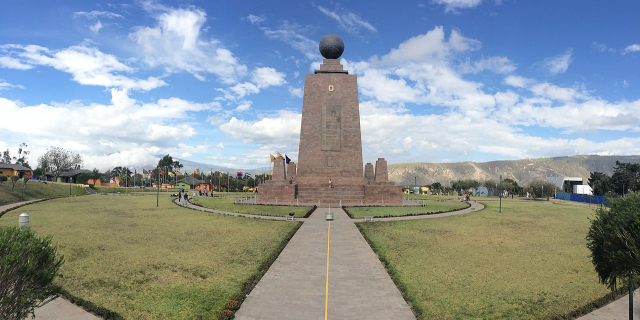Chimborazo (Spanish pronunciation: [tʃimboˈɾaso] ) is an inactive stratovolcano situated in the Cordillera Occidental range of the Andes. Its last known eruption is believed to have occurred around 550 A.D. Despite not being the tallest mountain in the Andes or on Earth, its summit holds the distinction of being the farthest point on Earth's surface from the Earth's center, due to its location along the planet's equatorial bulge. Chimborazo's height is 6,263 m (20,548 ft), well below that of Mount Everest (8,849 m).
Chimborazo is the highest mountain in Ecuador and ranks as the 39th highest peak in the entire Andes.
The mountain is a popular destination for mountaineering due to its challenging climbing routes, which involve traversing snow, ice, and rocky terrain. Climbers often need specialized gear like crampons and technical climbing equipment to tackle its routes.

Until the beginning of the 19th century, it was thought that Chimborazo was the highest mountain on Earth (measured from sea level), and such reputation led to many attempts on its summit during the 17th and 18th centuries.
In 1746, the volcano was explored by French academicians from the French Geodesic Mission. Their mission was to determine the sphericity of the Earth. Their work along with another team in Lapland established that the Earth was an oblate spheroid rather than a true sphere. They did not reach the summit of Chimborazo.
In June 1802, during his expedition to South America, the Prussian-born traveler Alexander von Humboldt, accompanied by the French botanist Aimé Bonpland and the Ecuadorian Carlos Montúfar, tried to reach the summit.[1] From his description of the mountain, it seems that before he and his companions had to return suffering from altitude sickness they reached a point at 5,875 m, higher than previously attained by any European in recorded history (Incans had reached much higher altitudes previously; see Llullaillaco). In 1831, Jean-Baptiste Boussingault and Colonel Hall reached a new "highest point", estimated to be 6,006 m.[2][3]
Other failed attempts to reach the summit followed.
On 4 January 1880, the English climber Edward Whymper reached the summit of Chimborazo.[4] The route that Whymper took up the mountain is now known as the Whymper route. Edward Whymper, and his Italian guides Louis Carrel and Jean-Antoine Carrel, were the first Europeans to summit a mountain higher than 20,000 feet (6,100 m).[5] As there were many critics who doubted that Whymper had reached the summit, later in the same year he climbed to the summit again, choosing a different route (Pogyos) with the Ecuadorians David Beltrán and Francisco Campaña.[6]
SAETA Flight 232In August 1976, SAETA Flight 232 carrying 55 passengers and four crew members aboard a Vickers Viscount from Quito to Cuenca disappeared en route. In February 2003, after almost 27 years,[7] the aircraft was found with the bodies of its 59 occupants at 5,310 metres (17,420 ft) elevation on Chimborazo by Ecuadorian climbers on the rarely used eastern route Integral.[8]


































Add new comment